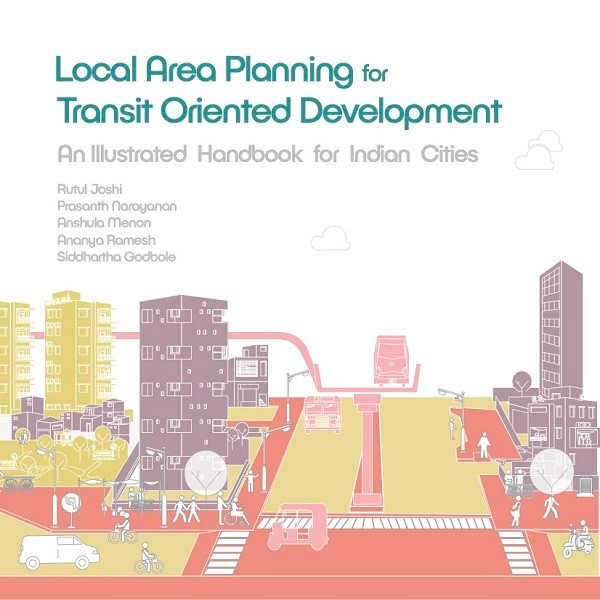LAP for Transit: Illustrated Handbook for Indian Cities

Books CUPP
This handbook illustrates how to plan for Transit Oriented Development by using the planning mechanism called ‘local area plans’ (LAP) for Indian cities. It is designed carefully to explain complex planning ideas in simple and visual terms. It will be useful to relevant authorities, planners, civic groups, students, and consultants working towards implementing integrated land use and transport planning.
The handbook combines a set of TOD principles (based on the national TOD policy 2017) with the LAP as a statutory mechanism (as per the GTPUD act 1976) to demonstrate planning interventions in Mumbai, Bangalore, Hyderabad, Pune and Jaipur - cities of different size-class. There are illustrated examples of LAPs being used for 'transformation' (core city areas), 'intensification' (inter-mediate areas), and 'in-fill' (peripheral areas). This is to portray that TOD doesn’t mean ‘one size fits all’ - transit nodes need to be planned and developed depending upon their location and ‘role’ in the overall urban networks.
The 2019 version of the handbook was launched by Mr D. S. Mishra, IAS (Secretary, MoHUA) and Ms D Thara, IAS (Joint Secretary, MoHUA), along with Dr Bimal Patel (President, CEPT University) on 5th August 2019. Since then, the handbook has been used to train about 350 government officials and planners nationwide as part of CRDF’s capacity-building program related to Local Area Planning (LAP) and Town Planning Schemes (TPS). After being used as training material with subsequent amendments, the current version of the handbook is finally published on the web. The handbook was updated again in 2022 with an additional chapter on 'key performance indicators'(KPIs) for TOD-based local area planning
Dr. Rutul Joshi has conceptualized and authored the handbook with his project team, Prasanth Narayanan, Anshula Menon, Ananya Ramesh, and Siddharth Godbole. The handbook was prepared in consultation with and peer-reviewed by various in-house and external experts. The handbook was prepared as the final output of the project ‘Planning Principles of transit-oriented development in Indian Cities’ funded by the Shakti Sustainable Energy Foundation (SSEF).
Download Handbook